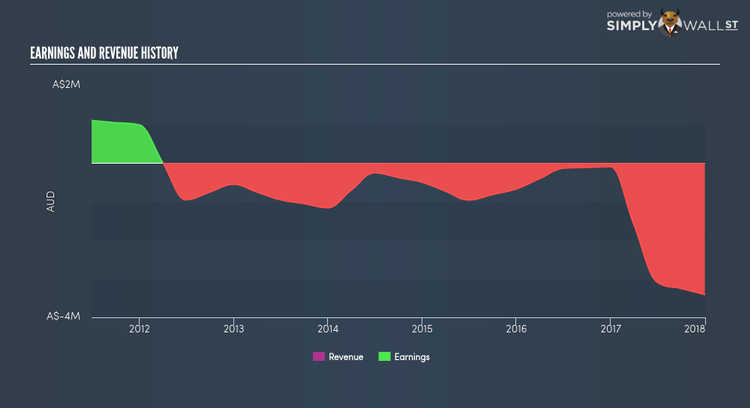One Thing To Consider Before Buying Golden Deeps Limited (ASX:GED)

If you are a shareholder in Golden Deeps Limited’s (ASX:GED), or are thinking about investing in the company, knowing how it contributes to the risk and reward profile of your portfolio is important. Every stock in the market is exposed to market risk, which arises from macroeconomic factors such as economic growth and geo-political tussles just to name a few. This is measured by its beta. Not every stock is exposed to the same level of market risk, and the market as a whole represents a beta of one. A stock with a beta greater than one is expected to exhibit higher volatility resulting from market-wide shocks compared to one with a beta below one.
See our latest analysis for Golden Deeps
What does GED’s beta value mean?
Golden Deeps’s beta of 0.94 indicates that the company is less volatile relative to the diversified market portfolio. This means the stock is more defensive against the ups and downs of a stock market, moving by less than the entire market index in times of change. Based on this beta value, GED appears to be a stock that an investor with a high-beta portfolio would look for to reduce risk exposure to the market.
Does GED’s size and industry impact the expected beta?
With a market cap of AU$7.20M, GED falls within the small-cap spectrum of stocks, which are found to experience higher relative risk compared to larger companies. Moreover, GED’s industry, metals and mining, is considered to be cyclical, which means it is more volatile than the market over the economic cycle. Therefore, investors may expect high beta associated with small companies, as well as those operating in the metals and mining industry, relative to those more well-established firms in a more defensive industry. It seems as though there is an inconsistency in risks portrayed by GED’s size and industry relative to its actual beta value. A potential driver of this variance can be a fundamental factor, which we will take a look at next.
How GED’s assets could affect its beta
During times of economic downturn, low demand may cause companies to readjust production of their goods and services. It is more difficult for companies to lower their cost, if the majority of these costs are generated by fixed assets. Therefore, this is a type of risk which is associated with higher beta. I test GED’s ratio of fixed assets to total assets in order to determine how high the risk is associated with this type of constraint. With a fixed-assets-to-total-assets ratio of greater than 30%, GED appears to be a company that invests a large amount of capital in assets that are hard to scale down on short-notice. As a result, this aspect of GED indicates a higher beta than a similar size company with a lower portion of fixed assets on their balance sheet. However, this is the opposite to what GED’s actual beta value suggests, which is lower stock volatility relative to the market.
What this means for you:
GED may be a worthwhile stock to hold onto in order to cushion the impact of a downturn. Depending on the composition of your portfolio, low-beta stocks such as GED is valuable to lower your risk of market exposure, in particular, during times of economic decline. What I have not mentioned in my article here are important company-specific fundamentals such as Golden Deeps’s financial health and performance track record. I urge you to complete your research by taking a look at the following:
Financial Health: Is GED’s operations financially sustainable? Balance sheets can be hard to analyze, which is why we’ve done it for you. Check out our financial health checks here.
Past Track Record: Has GED been consistently performing well irrespective of the ups and downs in the market? Go into more detail in the past performance analysis and take a look at the free visual representations of GED’s historicals for more clarity.
Other High-Performing Stocks: Are there other stocks that provide better prospects with proven track records? Explore our free list of these great stocks here.
To help readers see pass the short term volatility of the financial market, we aim to bring you a long-term focused research analysis purely driven by fundamental data. Note that our analysis does not factor in the latest price sensitive company announcements.
The author is an independent contributor and at the time of publication had no position in the stocks mentioned.

 Yahoo Finance
Yahoo Finance 
